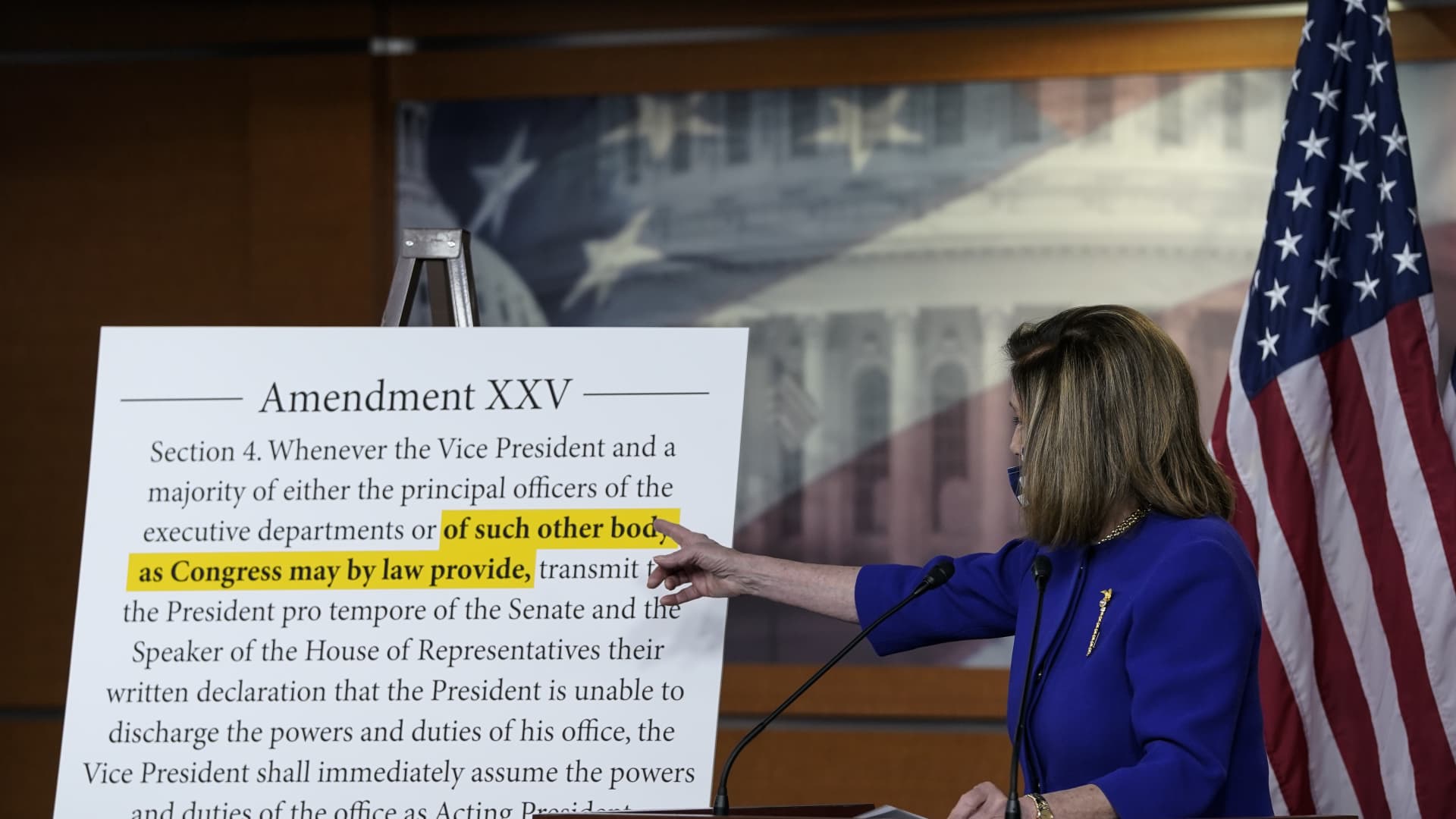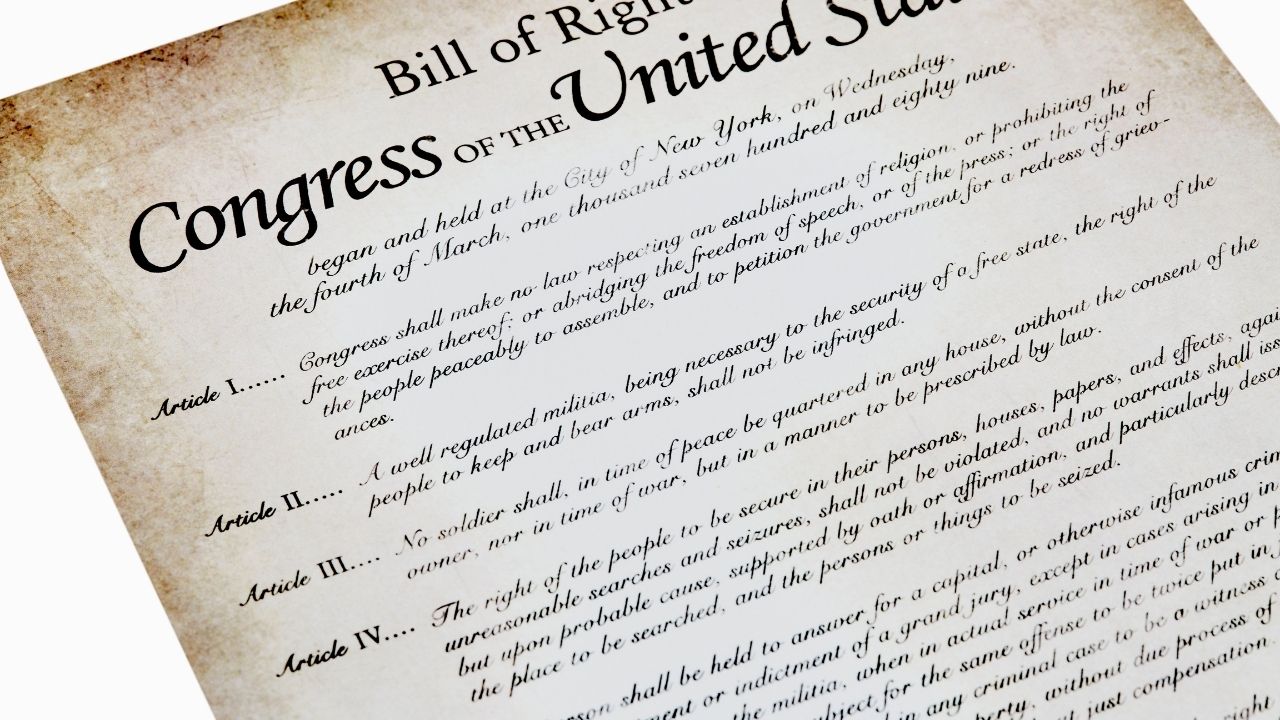The 25th Amendment to the United States Constitution is a critical component of the nation's governance framework, designed to address presidential succession and incapacity. Enacted in 1967, this amendment provides a clear and structured process for handling situations where the president is unable to fulfill their duties. As the political landscape evolves, the importance of understanding this amendment becomes increasingly vital for ensuring stability and continuity in leadership.
The 25th Amendment was born out of necessity following the assassination of President John F. Kennedy in 1963. At that time, there was no formal procedure for filling a vice presidential vacancy or addressing presidential incapacity. This constitutional gap highlighted the need for a legal framework to ensure seamless transitions of power, thereby safeguarding the nation's governance structure.
This article aims to provide an in-depth exploration of the 25th Amendment, its historical context, application, and significance in modern-day politics. Whether you're a student, a political enthusiast, or simply curious about the mechanisms of government, this guide will offer comprehensive insights into one of the most important amendments in U.S. history.
Read also:Vhsl Virginia Football A Comprehensive Guide To High School Football Excellence
Table of Contents
- The Historical Context of the 25th Amendment
- Structure and Provisions of the 25th Amendment
- Section 1: Vice Presidential Succession
- Section 2: Filling Vice Presidential Vacancies
- Section 3: Temporary Presidential Incapacity
- Section 4: Presidential Incapacity and the Role of the Cabinet
- Implementation and Real-World Applications
- Controversies Surrounding the 25th Amendment
- The Relevance of the 25th Amendment Today
- Future Implications and Potential Reforms
- Conclusion
The Historical Context of the 25th Amendment
The need for the 25th Amendment became apparent after several historical events highlighted gaps in the U.S. Constitution regarding presidential succession and incapacity. The assassination of President Abraham Lincoln in 1865, the death of President William McKinley in 1901, and the passing of President Franklin D. Roosevelt in 1945 all underscored the importance of having a clear process for transferring power.
However, it was the assassination of President John F. Kennedy in 1963 that catalyzed the push for constitutional reform. At the time, there was no formal procedure for filling a vice presidential vacancy, leaving the office vacant until the next election. This situation prompted Congress to draft and ratify the 25th Amendment, ensuring a more structured approach to presidential succession and incapacity.
Structure and Provisions of the 25th Amendment
The 25th Amendment consists of four sections, each addressing different aspects of presidential succession and incapacity. These sections provide a comprehensive framework for handling situations where the president is unable to fulfill their duties, ensuring continuity and stability in governance.
Below is a breakdown of the key provisions:
- Section 1: Clarifies that the vice president assumes the presidency upon the death, resignation, or removal of the president.
- Section 2: Establishes a procedure for filling a vice presidential vacancy.
- Section 3: Allows the president to temporarily transfer power to the vice president in cases of voluntary incapacity.
- Section 4: Outlines a process for the vice president and cabinet to declare the president incapacitated, even if the president disagrees.
Section 1: Vice Presidential Succession
Section 1 of the 25th Amendment explicitly states that in the event of the president's death, resignation, or removal from office, the vice president shall become president. This provision ensures a smooth and immediate transfer of power, preventing any potential leadership vacuum.
This section formalizes what was previously an implied understanding in the U.S. Constitution. By explicitly stating the vice president's role in succession, the amendment removes any ambiguity and reinforces the importance of having a clear line of authority.
Read also:Discover The Enigmatic American Society Of Magical Negroes
Historical Examples
There have been several instances where Section 1 of the 25th Amendment has been invoked. Notable examples include:
- President Lyndon B. Johnson assuming office after the assassination of President John F. Kennedy.
- President Gerald Ford becoming president following the resignation of President Richard Nixon.
Section 2: Filling Vice Presidential Vacancies
Section 2 addresses the issue of filling a vice presidential vacancy, a problem that had previously left the office vacant for extended periods. Under this section, the president nominates a new vice president, who must then be confirmed by a majority vote in both houses of Congress.
This provision ensures that the nation always has a vice president ready to assume the presidency if necessary. It also emphasizes the importance of congressional approval in the selection process, maintaining a balance of power between the executive and legislative branches.
Notable Appointments
Some notable appointments under Section 2 include:
- Gerald Ford being nominated by President Nixon and confirmed by Congress after Vice President Spiro Agnew resigned.
- Nelson Rockefeller being nominated by President Ford and confirmed by Congress after the presidency transitioned.
Section 3: Temporary Presidential Incapacity
Section 3 allows the president to voluntarily transfer power to the vice president in cases of temporary incapacity. This provision ensures that the nation is not left without leadership during periods when the president is unable to perform their duties, such as during medical procedures.
For example, President George W. Bush invoked Section 3 twice during his presidency to temporarily transfer power to Vice President Dick Cheney while undergoing medical procedures.
Procedure for Temporary Transfer
The process for transferring power under Section 3 involves the president submitting a written declaration to the president pro tempore of the Senate and the speaker of the House. Once this declaration is received, the vice president immediately assumes the role of acting president.
Section 4: Presidential Incapacity and the Role of the Cabinet
Section 4 addresses situations where the president is unable or unwilling to declare their own incapacity. In such cases, the vice president and a majority of the cabinet can declare the president incapacitated, transferring power to the vice president as acting president.
This section provides a crucial safeguard against situations where a president may be unwilling or unable to recognize their own incapacity, ensuring that the nation remains governed effectively.
Controversial Aspects
Section 4 has been the subject of debate and controversy, particularly in politically charged environments. Critics argue that it could be used as a tool for political manipulation, while supporters emphasize its importance in maintaining governmental stability.
Implementation and Real-World Applications
Since its ratification, the 25th Amendment has been invoked several times, demonstrating its practical application in real-world scenarios. Each invocation highlights the amendment's importance in ensuring continuity and stability in the U.S. government.
For example, the amendment was invoked during medical procedures involving Presidents Ronald Reagan and George W. Bush, ensuring that the nation was not left without leadership during these critical moments.
Statistical Insights
According to data from the U.S. National Archives, the 25th Amendment has been invoked a total of six times since its ratification. These invocations underscore the amendment's relevance and effectiveness in addressing presidential succession and incapacity.
Controversies Surrounding the 25th Amendment
Despite its importance, the 25th Amendment has not been without controversy. Critics argue that certain provisions, particularly Section 4, could be subject to political manipulation or misuse. There have been calls for greater clarity and specificity in the amendment's language to prevent potential abuses.
Additionally, debates surrounding the role of the cabinet in declaring presidential incapacity have sparked discussions about the balance of power between different branches of government.
Public Perception
Public opinion on the 25th Amendment varies widely, with some viewing it as a vital safeguard for democracy, while others see it as a potential tool for political gamesmanship. Surveys conducted by reputable organizations such as Pew Research Center indicate that a majority of Americans support the amendment's provisions, but there is still room for education and awareness.
The Relevance of the 25th Amendment Today
In today's rapidly changing political landscape, the relevance of the 25th Amendment cannot be overstated. As the nation faces new challenges and uncertainties, the amendment serves as a critical tool for ensuring stability and continuity in leadership.
Moreover, the amendment's provisions have been cited in discussions surrounding presidential health and fitness for office, highlighting its importance in addressing contemporary issues.
Modern Applications
Recent events have prompted renewed interest in the 25th Amendment, with experts and lawmakers calling for greater awareness and understanding of its provisions. This renewed focus underscores the amendment's continued relevance in modern governance.
Future Implications and Potential Reforms
Looking ahead, there may be opportunities to refine and improve the 25th Amendment to better address the needs of a modern democracy. Potential reforms could include clarifying language, expanding the role of independent medical evaluations, or incorporating additional safeguards to prevent misuse.
As the nation continues to evolve, the 25th Amendment will undoubtedly remain a critical component of the U.S. Constitution, ensuring stability and continuity in governance for generations to come.
Conclusion
The 25th Amendment is a vital component of the U.S. Constitution, providing a clear and structured process for addressing presidential succession and incapacity. Through its four sections, the amendment ensures that the nation remains governed effectively, even in the face of unexpected challenges.
As we have explored in this article, the amendment's historical context, structure, and real-world applications demonstrate its importance in maintaining governmental stability. While controversies and debates surrounding its provisions persist, the amendment remains a crucial safeguard for democracy.
We invite you to share your thoughts and insights in the comments section below. Additionally, feel free to explore other articles on our site for more in-depth analyses of U.S. constitutional law and governance.


